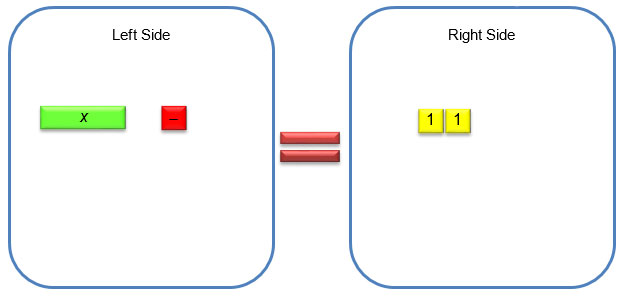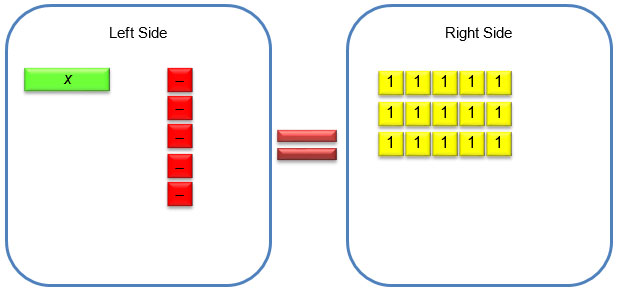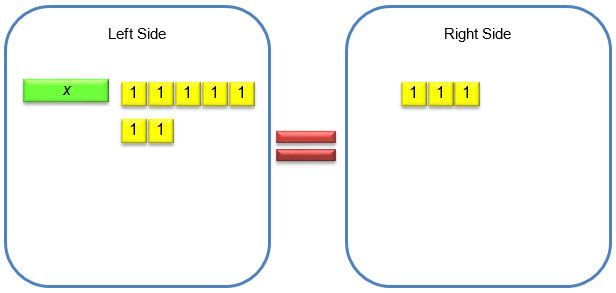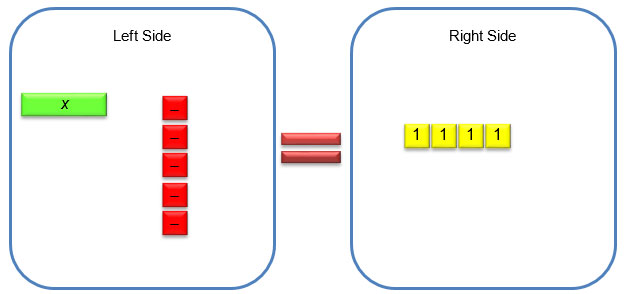
There are many different models that you could use to set up and solve one-variable equations. In this section, you will use algebra tiles to set up and solve one-variable equations involving the operations of addition and subtraction.
For algebra tiles, a rectangle represents the variable, usually x, and squares are used to represent numbers.

Consider the equation x − 1 = 2. This equation can be modeled with algebra tiles using one green rectangle (positive x-tile) and 1 red square (negative unit tiles) on the left side of an equal sign and 2 yellow squares (positive unit tiles) on the right side of an equal sign.

![]() Watch this equation being solved using the algebra tile model in a video.
Watch this equation being solved using the algebra tile model in a video.
![]() Use the interactive linked to the image below to set up and solve equations with algebra tiles on your own.
Use the interactive linked to the image below to set up and solve equations with algebra tiles on your own.
How does the algebra tile model allow you to better visualize the concept of zero pairs?

How are addition and subtraction related, and what does that tell you about how to solve equations involving addition or subtraction?

For Questions 1 – 3, use the algebra tile model to determine the value of x.



![]() Use the griddable response interactive below to record and check your answer.
Use the griddable response interactive below to record and check your answer.